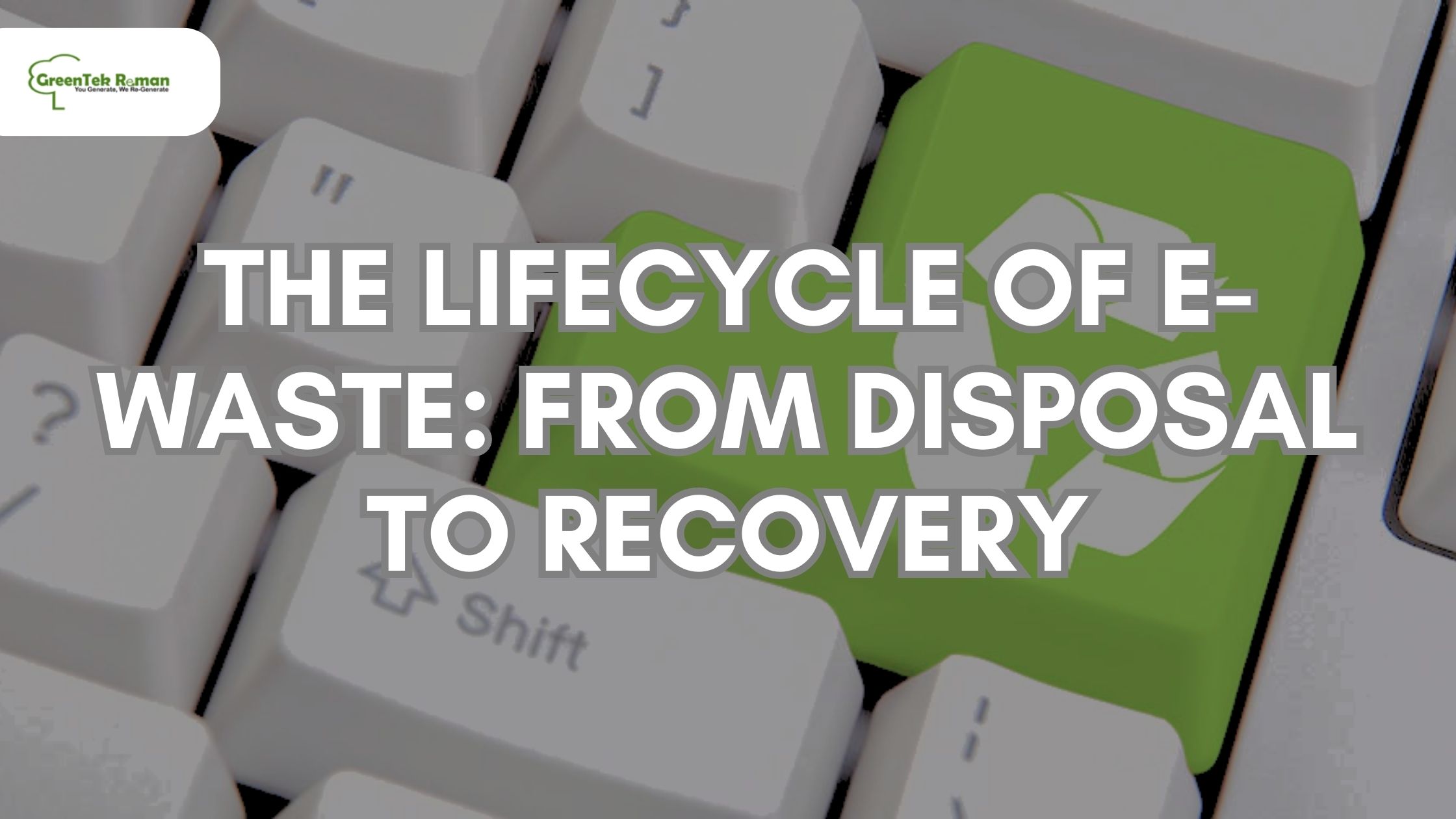The Lifecycle of E-Waste: From Disposal to Recovery
Approximately 24.9 Mt of e-waste was produced in Asia in 2019, followed by 13.1 Mt in America, 12 Mt in Europe, 2.9 Mt in Africa, and 0.7 Mt in Oceania. E-waste output has dramatically increased due to the technology sector’s ongoing growth, shorter product life cycles, and customer demand for newer gadgets. Several significant decisions that affect the health and welfare of our planet must be made from the time an electronic product is conceived until its eventual recycling or destruction. Understanding the e-waste lifecycle & electronic waste management will help us all fight to reduce its negative consequences and promote a circular economy that puts environmental protection and resource conservation first.
The Advent of E-Waste:
The life of e-waste begins with the spread of the newest electronic devices, which entice customers with their cutting-edge features and functionalities. The pull of newer models forces the inevitable replacement of older ones as technological development accelerates. As a result, abandoned electronics start their journey as e-waste, prompting the development of strategic management solutions to address this escalating problem. Beyond just affecting individual customers, this urgent issue has enormous implications for corporations, notably in the IT industry. Computer systems, servers, and other electronic equipment frequently undergo updates due to the unrelenting pace of invention, which significantly adds to the growing electronic waste stream.
Discarding and Collection:
As soon as the electrical gadget reaches the end of its useful life, it has to be disposed of correctly. Some of these abandoned devices may end up in landfills or incinerators without being adequately recycled, which adds to the environmental burden of e-waste. Others, momentarily forgotten but present as possible environmental threats, briefly seek sanctuary in storage. Thankfully, a sizable part of e-waste is collected through specialized facilities and dedicated recycling programs. The need to use the proper collection methods to keep electronic waste out of landfills is emphasized by this aspect of e-waste management. To reduce the ecological impact of electronic waste, responsible collection techniques play a crucial role in guiding e-waste toward viable recycling and resource recovery options.
The Challenge of Informal Recycling:
The developing field of informal recycling operations, widespread in many locations worldwide, is a recurring difficulty in the e-waste landscape. These impromptu methods aim to recover precious materials like gold, copper, and other metals from outdated computer equipment, offering a slim chance of financial support for some. However, the unregulated recycling industry hides dangerous repercussions for human health and the environment in the shadows of danger. Workers unintentionally expose themselves to dangerous substances while extracting materials if they are not following correct safety procedures and wear the appropriate protective gear. The harmful effects manifest as severe health issues, and environmental contamination makes the e-garbage management problem even worse. Addressing this challenge mandates concerted efforts toward promoting formal e-waste recycling avenues underpinned by comprehensive safety regulations and sustainable practices.
Formal Recycling Facilities:
The existence of professional e-waste management companies like GreenTek Reman dedicated to environmentally friendly operations is a glimmer of hope in the maze of e-waste. We uphold the values of sustainability and environmental stewardship by abiding by strict guidelines and using cutting-edge technologies to precisely and carefully disassemble electronic trash. Formal recycling facilities are distinguished by their capacity to separate different components, allowing for further processing and secure disposal. By giving outdated technology a new lease on life, embracing refurbishing programs gives our efforts a new dimension and promotes the concepts of waste reduction and resource conservation. To increase our contribution to a sustainable e-waste management paradigm, organizations must aggressively promote the adoption of formal recycling routes with the help of e-waste management services.
The Art of Recovery:
The art of recovery, where precious elements hidden within e-waste emerge through a precise combination of mechanical and chemical procedures, is at the core of recycling facilities. Gold, silver, copper, and palladium are some of the priceless materials discovered as treasures. The demand for mining is successfully reduced by this salvage operation, which also gives these valuable materials new life. This reduces the strain on natural resources. The tremendous impact on energy conservation that the art of recovery has is fundamental, opening the door for reduced environmental effects from resource extraction and mining. Formal recycling facilities serve as a shining example of resource efficiency, bringing the principles of a circular economy to life and supporting efforts to achieve sustainable development.
Raising Awareness:
An elemental pillar of combating the e-waste crisis is raising awareness among stakeholders, including consumers, manufacturers, policymakers, and organizations. Awareness catalyzes informed decision-making, empowering individuals to comprehend the multifaceted implications of their electronic choices. This heightened consciousness cascades into tangible behavioral shifts, compelling the embrace of responsible disposal practices and the earnest pursuit of recycling initiatives. Equally critical is disseminating knowledge among manufacturers and inspiring the design of products rooted in recyclability and sustainability. Organizations championing the cause of electronic waste management stand at the vanguard of this awareness-raising campaign, wielding their influence to usher in transformative change in the collective ethos of electronic consumption.
Wrapping Up
The lifecycle of e-waste is a multifaceted journey fraught with environmental challenges and profound implications for our planet’s well-being. From the advent of new electronic gadgets to their eventual recovery and recycling, responsible electronic waste management has become paramount for individuals, businesses, and governments. Organizations hold a pivotal role throughout this complex lifecycle, given their significant contribution to the electronic waste stream. As a leading electronic management service provider, GreenTek Reman is committed to guiding businesses through each stage of the e-waste lifecycle. From responsible disposal and proper collection to facilitating formal recycling at modern facilities, GreenTek Reman ensures that discarded electronic devices are handled meticulously.


